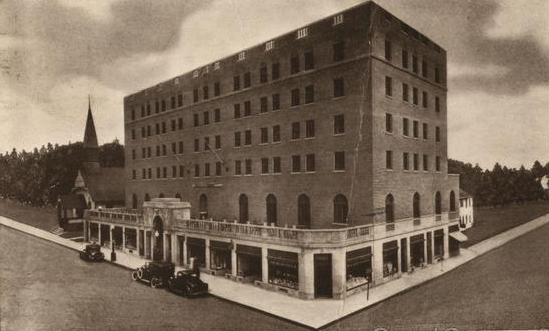 Hotel Saranac as seen in an image from a vintage postcard. Note the cars out front! The newsstand was located inside on the first floor, to the right of the main entrance. Hotel Saranac as seen in an image from a vintage postcard. Note the cars out front! The newsstand was located inside on the first floor, to the right of the main entrance. News came last week that Hotel Saranac, which has been undergoing an extensive renovation project, will open its doors at the end of December. The anticipated re-opening of the hotel has generated a great deal of excitement around Saranac Lake. Residents and visitors, young and old, are all eager to visit the hotel’s public spaces, share a meal, and browse the shops in the first floor arcade. In all of the increasing excitement, people have been sharing their memories of the hotel with each other, and with us here at Historic Saranac Lake. I recently had the opportunity to visit with Kay and Marvin Best, longtime Saranac Lake residents who love the village and its rich history. The Bests are keen to see the hotel re-open at the end of the month and Kay shared a special memory with us: as a little girl, she would go to the hotel’s first floor newsstand, run by “Ma” Ryan, to purchase a newspaper for her grandfather. Entering the hotel was a unique experience for little Kay, as she remembers: “Every time you opened the door and stepped in, the sound was distinctive,” referring to the mix of voices, the sound of steps on the terrazzo floors, and countless other distinctive sounds that mingled in the air. When the opening date at the end of December rolls around, Kay and Marvin will surely be among those once again walking through the front doors of Hotel Saranac, for the first time in a number of years. Of that moment, Kay says, “When I go back in, I want to hear that sound." We’re eager to join her and we don’t think she’ll be disappointed. Do you have Hotel Saranac memories you’d like to share? Please let us know in the comments!
4 Comments
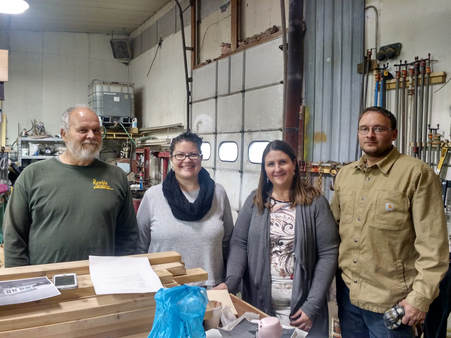 From left: Don Rumble, Aurora Wheeler, Melissa Kline, and Joe Rumble, following a productive and fun meeting about the construction of the Cure Porch on Wheels! From left: Don Rumble, Aurora Wheeler, Melissa Kline, and Joe Rumble, following a productive and fun meeting about the construction of the Cure Porch on Wheels! On Thursday, November 9, HSL Executive Director Amy Catania and I (Aurora) ventured out to Bloomingdale, NY, for a meeting about the construction of the Cure Porch on Wheels. Amy and I met with Don Rumble and his son Joe, along with Melissa Kline. Don and Joe are the heart of Rumble Carpentry, a business that sees them work on a variety of building projects from their large, well-equipped shop in Bloomingdale. Joe and Don frequently work with Melissa, whose business, Maple Lane Design and Drafting, is also based in Bloomingdale. It's thanks to Melissa and her skills that we have the great renderings of the Cure Porch on Wheels, enabling us to share our vision for what the porch will look like. At this meeting, we discussed a variety of ideas related to the eventual construction of the porch, including how to power the porch for electricity, wood trim, to insulate or not, window trim, the specific type of trailer needed to build the porch on, and many more important details. This is a great collaborative effort to make the Cure Porch on Wheels the best it can be! Our next step is a big one: purchasing the trailer that we will build the porch on! Once we have the trailer, Melissa will be able to gather precise measurements for the detailed specs she is creating in partnership with engineer Wiley Lavigne. This is an important step in making the Cure Porch on Wheels a reality and I could not be more excited to keep rolling forward! Stay tuned for more updates and, as always, please consider making a donation to help us reach our goal. Online donations may be made at: https://www.razoo.com/story/Cureporch It isn't often that our oral history project links to Hollywood, but today it does!
Today marks what would have been the 95th birthday of screen star Veronica Lake. While she is remembered all over the world for her stunning beauty and her roles in classic films noir, for some, Veronica Lake is better remembered as Connie Keane, a local resident of Saranac Lake in the 1930s. Constance Ockelman, as she was then known, was born on November 14, 1922, in Brooklyn. In the early 1930s, Connie's widowed mother married a man named Anthony Keane and the family eventually settled at 1 Riverside Drive in Saranac Lake, where Keane would receive treatment for tuberculosis. Among the local families who befriended the Keanes were the Bombards: A. Douglas and his wife, Charlotte Littlejohn Bombard. Young Connie Keane, whom no one realized would one day become a famous actress, babysat the Bombard children. Natalie Bombard Leduc, who was eight years younger than Connie, has vivid memories of her babysitter, and she spoke about Connie in a recent oral history interview: "...she had a lovely mother. Her mother and my mother were very good friends. She was not a pretty little girl, but she was nice and she gave me a doll I still have." While living in Saranac Lake, Connie attended St. Bernard's School, before being sent to boarding school in Canada. When Connie was sixteen, the family moved to California and it was shortly after that move that Connie became involved in acting, getting the attention of a producer and, like so many other stars from that time, changing her name to something a bit more alluring than Connie Keane. Veronica Lake starred in twenty-six films, appearing with stars such as Joel McCrea, Alan Ladd, and Claudette Colbert. When Lake died in 1973 at the age of 50, the Los Angeles Times erroneously reported that she had lived in Lake Placid. For those Saranac Lakers who remember Connie Keane, however, that's a mistake that none of them would make! Happy Birthday, Connie! I recently returned from a trip to Colorado, where I was able to give a presentation at the Colorado Springs Pioneers Museum and tour the museum. I spoke about Saranac Lake's tuberculosis history, as well as our many projects at Historic Saranac Lake, to a group of volunteers and staff from the museum. They were a wonderful, interested audience and it was gratifying to be able to share Saranac Lake's unique story with such a great group of history-minded people. Colorado Springs has its own rich history of tuberculosis research and care, so I learned some new things, as well! Thank you to the staff and volunteers for having me! 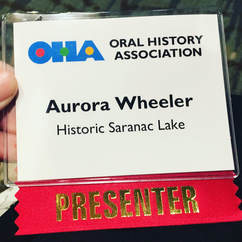 It was wonderful to be chosen to be part of this amazing conference! It was wonderful to be chosen to be part of this amazing conference! In a manner of speaking, that is! On October 4, I traveled to Minneapolis to attend the Oral History Association annual meeting, a multi-day event attended by historians, scholars, authors and more. The meeting included a variety of events including panel discussions, paper presentations, performances, workshops and listening sessions. The keynote speaker was Dr. Jill Lepore, a professor of American History at Harvard whose work includes The Story of America: Essays on Origins, The Secret History of Wonder Woman and Joe Gould’s Teeth, the story of a man who believed himself to be a great historian and who set about to record everything everyone said to him, all the time. Although mentally ill, Gould was interested in the lives and experiences of everyday people, which many of us who do oral history are keenly interested in, as well. You don’t have to be famous to have a great story to tell! For me, the biggest highlight of the conference was presenting about the Cure Porch on Wheels. My presentation was part of a panel entitled “Beyond the Walls: Engaging Audiences Inside and Outside the Museum.” It was an excellent opportunity for me to share our designs, inspiration, and plans for use with OHA members. The other presenters on the panel, Ellen Brooks from the Wisconsin Veterans Museum and Kathleen Klehr of Scott County (MN) Historical Society, had fascinating work to share and between the three of us, I believe we gave the audience an excellent view of the kinds of programming and projects that may be done when you get outside the museum walls and connect with the community around you. Travel to the conference was made possible by grant funding from the National Endowment for the Arts. Opportunities such as these, where I may share the Cure Porch with an audience from around the country, are very unique and special, especially as we try to raise interest and funds! Questions and comments after the presentation affirmed my belief that this project is one that can and will be of great benefit to our community and will help us all celebrate the fantastic history and people of Saranac Lake. To support the porch and learn more, please visit: https://www.razoo.com/story/CurePorch 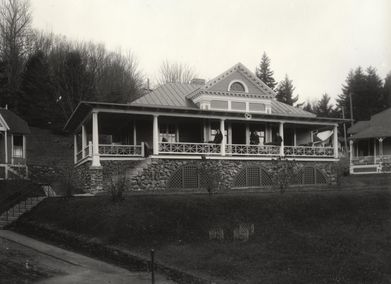 Cure cottage with cure porches at Trudeau Sanatorium. Cure cottage with cure porches at Trudeau Sanatorium. We spend a lot of time looking at porches, thinking and talking about porches, even drawing porches, all in an effort to create a concrete set of plans for the creation of the Cure Porch on Wheels. This project is important to us and the community we serve, which is why we spend so much time trying to make it great. One aspect of the project that is both a challenge, but also gives a sense of purpose is the idea of the porch itself. There are other organizations, including museums, with mobile exhibit spaces, but none of those look like a cure porch. Many such spaces are made from remodeled ice cream trucks, public buses, or even something like an RV. They’re the perfect fit for that organization, but they’re not quite what we want to do, what we think will be an ideal space not just for HSL activities, but also for the community organizations we’ll be partnering with to promote local artists, cultural activities and more. So why a cure porch? Why a porch at all, why not just a boxy mini house or revamped Airstream (I love Airstreams, so please send us one if you can)? Because those things aren’t emblematic of Saranac Lake. A cure porch isn’t just an open space you travel through to get to the house. It isn’t just a pretty piece of architectural decor. Cure porches were the places where countless people from all over the United States and abroad spent their days and nights, in all seasons, getting well. On cure porches, tuberculosis patients laughed, cried, felt better, felt worse, read letters from family members, listened to the radio (WNBZ was the local station), and made lifelong friends. There were cure porches on cottages and at sanitoria. Simply put, they were an important part of life in Saranac Lake for a so many people. Now, they adorn many houses in town and remind us of the village’s fascinating past. 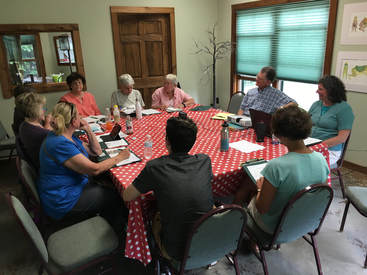 TAUNY Executive Director Jill Breit, far right, leads an oral history interview training session. TAUNY Executive Director Jill Breit, far right, leads an oral history interview training session. Fun things are happening in Cure Porch on Wheels land! Once it’s built, the primary usage for the Cure Porch on Wheels will be to conduct oral history interviews and collect the wonderful stories of Saranac Lake residents, young and old. To foster enthusiasm for oral history, as well as train volunteers, HSL recently hosted an oral history interview training session. The session was led by Jill Breit, Executive Director of Traditional Arts in Upstate New York (TAUNY). Jill is a folklorist and at TAUNY has worked on a number of oral history projects to preserve the stories and traditions of many upstate communities. Seating was limited for the training, but we were delighted to have a full house of enthusiastic guests. Each participant had their own interests, whether it be volunteering for HSL, writing family history, or conducting interviews for book projects. Jill spoke about many facets of oral history, such as choosing a project, finding the right context, and best practices for conducting interviews. A discussion on ethical issues (what happens if someone tells you about something scandalous or even illegal?) led to a great, impromptu storytelling circle about life in Saranac Lake, and the ways we tell stories and why it is so important that we share our stories with each other. Jill provided everyone with a great deal of valuable information and hands-on practice in what it is like to do oral history interviews. Her visit was made possible by a grant from the National Endowment for the Arts. We’re looking forward to continuing to work with her and TAUNY as we develop the porch. We’re especially excited to have gained some new volunteers through the training session! If you are interested in volunteering for the HSL oral history project or would like to share your story with an interviewer, please contact us at [email protected] or (518) 891-4606. 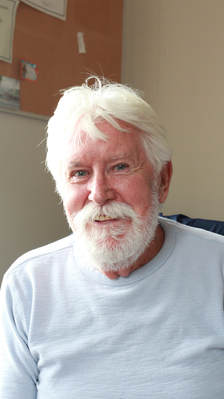 Howard Riley is known all over Saranac Lake: in his life he's been a village trustee, mayor, cab driver, and newspaper editor. One of his earliest — and most enjoyable — jobs was as a bellhop at the Alpine Hotel. Recently, I was fortunate enough to have the opportunity to chat with Howard about his memories, not only about his time working at the Alpine, but about some of the village’s other memorable hotels as well. Howard began work early in life: one of his first jobs was as a tray boy, delivering meals three times a day to tubercular patients in the cure cottage at 1 Pine Street, even on school days. At the age of sixteen, Howard moved on to the newly opened Alpine Hotel, a position he describes as his “first real fun job.” Howard’s duties as a bellhop were varied: carrying bags to rooms, operating the hand-crank elevator, and even running errands for the staff. He laughingly remembers being sent to a nearby grocery store by Effie, the Alpine’s cook. She had run out of eggs during the breakfast rush and at her urging, Howard dashed to the nearest store to procure the much-needed supplies. During Howard’s tenure as a bellhop, the Alpine Hotel was being used as a dormitory for Paul Smith’s College students, many of whom were World War II veterans. “They were our heroes...I couldn’t wait to see them.” The young bellhop was delighted to spend as much time as he could around the vets living at the Alpine, and when any of them happened to remember his name, Howard was delighted. A lifelong Saranac Lake resident, Howard also has great memories of the other hotels that once filled downtown, including the Arlington, St. Regis, Berkeley and Hotel Saranac. Howard recalls the nightclub in the basement of the Arlington and the glass-enclosed radio station in the Berkeley Hotel, which offered a terrific view of everything that was going on downtown. The station featured local programming, including Howard’s sixth grade spelling bee, although we have no word on how well the future newspaper editor performed. Of Saranac Lake’s many hotels, only Hotel Saranac remains. It was there that Howard, during his time as a newspaper delivery boy, used to spend cold winter evenings in the men’s lounge. Howard and a group of other newsboys made the men’s lounge their hangout: a great place to get warm and observe the goings on of life at the hotel. Back then, access to bathroom stalls cost five cents, and Howard now happily confesses that the boys bypassed the loss of a precious nickel by sliding on the floor, underneath the doors. Though Howard notes that the boys “were a wild bunch,” they were never thrown out of the hotel. Hotel Saranac remained a destination for Howard throughout his life and he describes life at the hotel as “unbelievable,” noting that people were always coming and going, whether they were vaudeville stars, tourists, or residents attending the annual fireman’s ball. Looking forward to Hotel Saranac’s re-opening in the fall, Howard says, “it makes the downtown.” Hotels have long been an important part of life in Saranac Lake, and it looks like that will continue well into the future, if only to give Howard Riley more places to have adventures and stories to tell. 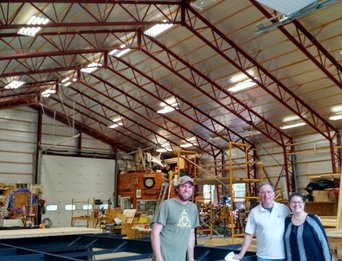 As much as all of us at HSL love being at the Saranac Laboratory Museum, a fascinating building built in 1894, it is fun to get out of the office sometimes! Executive Director Amy Catania and I recently ventured out of the office to meet with Bill Plumb and Joe Plumb of Adirondack White Pine Cabins. The Plumb's business is located right here in Saranac Lake and it's a (somewhat) hidden treasure! At their massive garage just off Route 3, Bill, Joe and their team build small custom cabins (on wheels!) which are shipped all over the country. We met with Bill and Joe to discuss the mobile porch project and share our ideas with them. The meeting was a huge success, if I do say so myself! Bill and Joe were interested in our plans and rough sketches for the porch. The Plumbs have a wonderful amount of practical knowledge and experience and they immediately applied all of that to our ideas. We discussed structure, feasibility, materials, and vehicles, among many other things. We know that this porch can and will be built!! We're looking forward to a continued collaboration with the crew at Adirondack White Pine Cabins and know that they are going to provide us with invaluable expertise, professionalism and enthusiasm. Above and below, see photos of our visit, taken by our intrepid Executive Director Amy. Amy is always eager for a good photo opp. We have some exciting meetings coming up to further develop our plans for programming, community collaborations, fundraising and more, so stay tuned for updates! 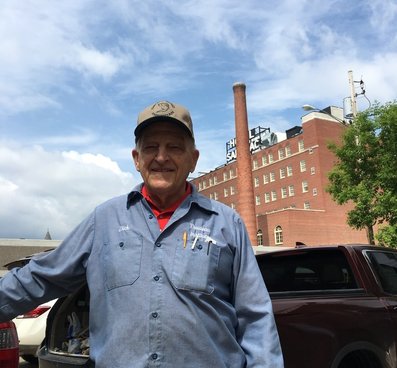 One of the joys of working in a town like Saranac Lake, and at an organization like HSL, is that you never know who you might meet. Today, Dick Demerse just about made our week with a visit. Dick, who probably knows more about local history than I ever could imagine knowing, has been a mainstay at Trudeau Institute for more than 45 years and before that he worked on antique boats at many camps in the area. As if that wasn't enough, Dick also shared some memories of working at Hotel Saranac. Since we have hotel fever here at HSL, we were all ears! Returning home from World War II, Dick found himself in need of a job and, because so many war veterans were already back in the United States, he found jobs a bit scarce. Enter Eleanor Munn, the manager of the Hotel Saranac and, in Dick's words, "a real peach." Although Dick had no hotel experience, Eleanor was a great friend to many returning veterans and she gave Dick a job: "hopping bells" as he puts it. Mrs. Munn explained to Dick that the job was important, as bellhops were "the best ambassador for the hotel we have," and he took her words to heart. Dick says he was polite, met a lot of great people and that it was "the best job I ever had." Some of Dick's best memories include the tremendous 1947 Serralles-Montalvo wedding, the guests for which took up four floors of rooms, and his adventures operating the elevator. Dick had a good laugh relating one particular story about "hopping bells:" at the time, bellhops were paid $15 a week, but after a state inspector came by and found out that the bellhops were operating the elevator (which at that time still involved a hand crank and the need to stop the elevator at precisely the right spot), in addition to all of their other duties, he insisted that the hotel pay the young men the standard rate for elevator operators: $19 a week. This dramatic raise was surely appreciated by the hardworking bellhops. To commemorate Dick's surprising and wonderful visit to HSL today, we snapped a photo of him with Hotel Saranac in the background. We're planning another visit with Dick to chat more about his experiences around Saranac Lake, and at the hotel in particular, so make sure you check this page for updates, as well as on our facebook page. P.S.: Do YOU have stories about working at Hotel Saranac or other local hotels? We want to hear from you! Please email [email protected] or call us at (518) 891-4606 and ask for Aurora. |
About
Historic Saranac Lake is developing the Cure Porch on Wheels, an exciting mobile exhibit space that will allow HSL to present mini exhibitions and oral history projects to audiences at locations throughout the area. Archives
December 2017
Categories |
Historic Saranac Lake at the Saranac Laboratory Museum
89 Church Street, Suite 2, Saranac Lake, New York 12983
(518) 891-4606 - [email protected]
89 Church Street, Suite 2, Saranac Lake, New York 12983
(518) 891-4606 - [email protected]

Historic Saranac Lake is funded in part by the New York State Council on the Arts with the support of the Office of the Governor and the New York State Legislature,
and an Essex County Arts Council Cultural Assistance Program Grant supported by the Essex County Board of Supervisors.
and an Essex County Arts Council Cultural Assistance Program Grant supported by the Essex County Board of Supervisors.
© 2023 Historic Saranac Lake. All Rights Reserved. Historic photographs from Historic Saranac Lake Collection, unless otherwise noted. Copy and reuse restrictions apply.
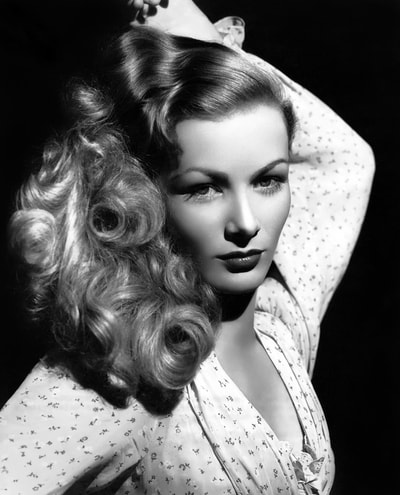
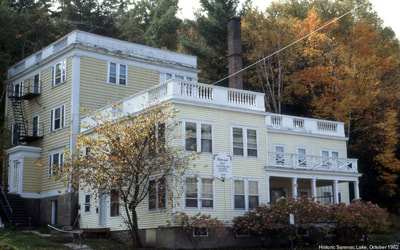
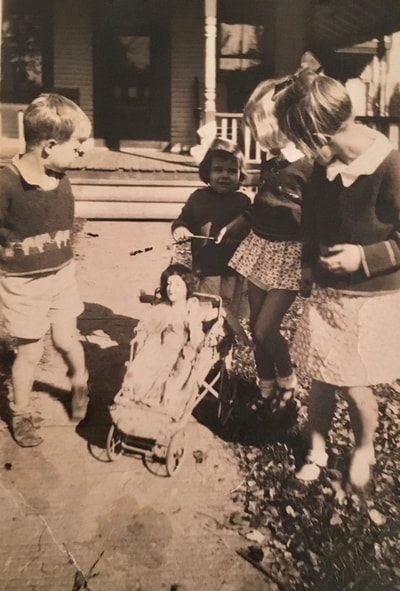
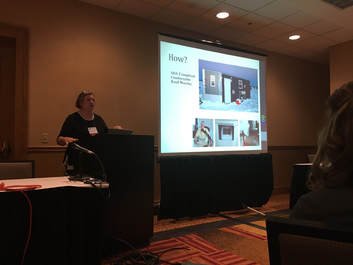
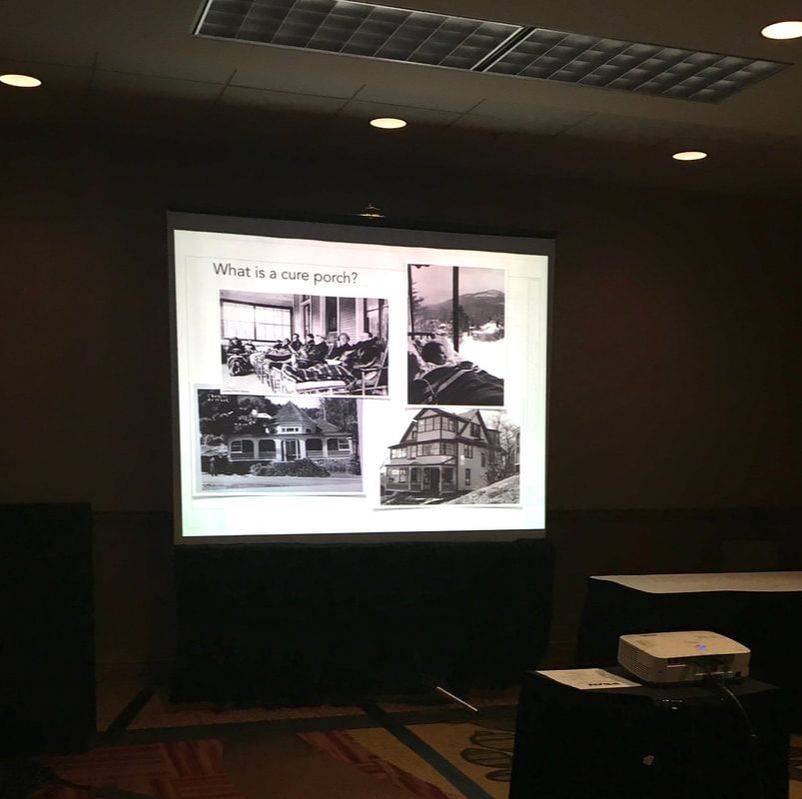
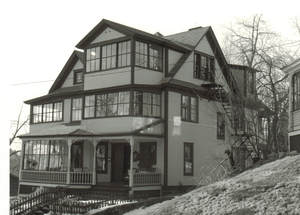
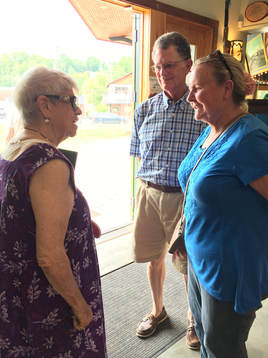
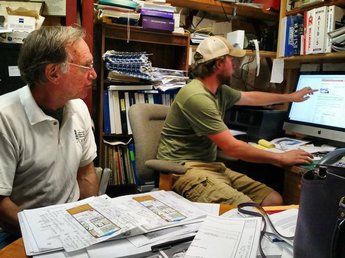
 RSS Feed
RSS Feed